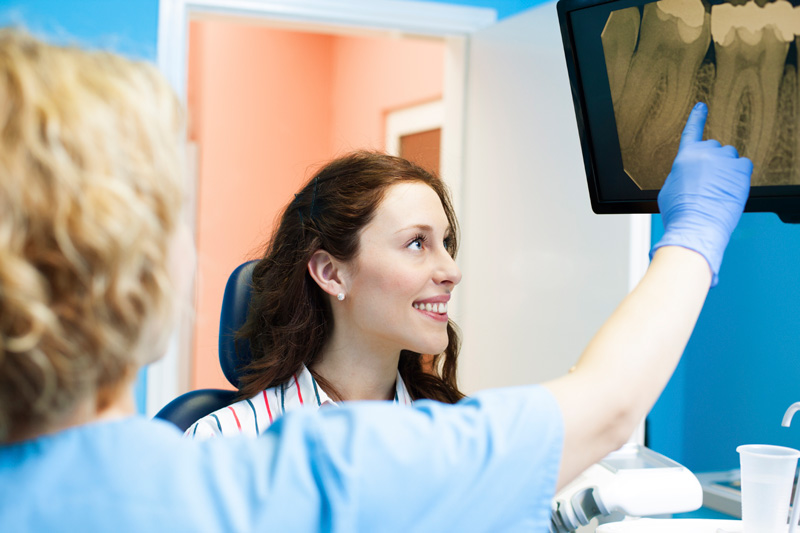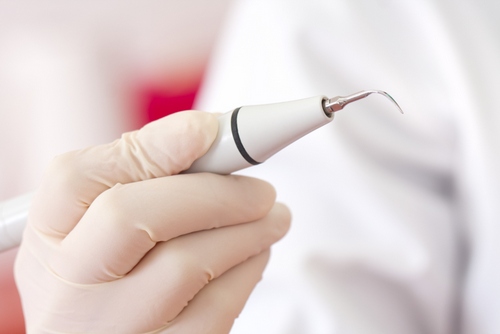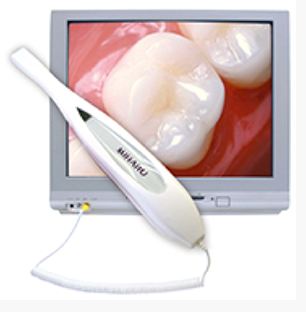Dental Technology
Dentist Ann Arbor
Digital X-rays
X-rays are a primary tool for early identification of dental problems. Detecting issues with x-rays before they become problematic can save you money in the long run. Early detection can help prevent the need for more extensive, expensive procedures or surgeries. X-rays are primarily used to detect:
| • |
Internal tooth decay
|
| • |
Cysts (fluid filled sacks at the base of your teeth)
|
| • |
Tumors, both cancerous and non-cancerous
|
| • |
Impacted teeth
|
| • |
Teeth that are still coming in |
At Greashaber Dentistry, we use digital x-rays, which have several advantages over traditional film based x-rays. Digital x-rays allow us to take x-rays with 1/5 of the radiation that you would receive from traditional dental x-rays. The worry of exposure to excess radiation is eliminated.
Large on-screen x-rays make patient communication more effective. The immediate observation of the images on the screen allows us to discuss your dental health quickly and accurately.
Digital radiography has greatly enhanced the practice of dentistry. It allows the patient and the doctor to see images of the teeth in higher resolution on a large format for easier detection of problems, all while decreasing the radiation exposure to the patient. The process we use further defines the radiograph, resulting in clinically meaningful images that are sharp, detailed and rich in contrast.
Images are available instantly after exposure, eliminating the wait and effort spent developing and mounting x-rays. If an image needs to be retaken, it can be done immediately. Digital format also allows us to send and receive your images electronically, allowing for a faster consultation with your dentist.
Ultrasonic Scaler
We use ultrasonic scalers for most adult dental cleanings. These devices use ultrasonic vibrations to help break down the plaque and calculus on the teeth that cause gingivitis and periodontal disease. The ultrasonic cleaners create microscopic bubbles that implode on the surface of the tooth, killing microbes and removing plaque and tartar in the process. Our instruments use a thin tip to better navigate in the periodontal pockets to help maintain optimal gingival health.
The procedure uses water and/or an antimicrobial liquid called chlorhexidine. It can remove tartar buildup in hard-to-reach areas, with no damage to the tooth enamel. Manual scaling often uses pressure for cleaning, while the vibration produced by the scaling tip of an ultrasonic scaler is barely perceptible. This makes ultrasonic cleaning suitable to those with sensitive teeth. The cleaning process is faster than manual scaling, making your visit more comfortable.
After your teeth have been cleaned with the ultrasonic cleaner, your teeth will be hand scaled to check for any residual deposits and then polished.
Intraoral Camera
X-rays give us a clear view of what we can't see such as decay between the teeth. An intraoral camera gives the patient a view of what the dentist sees. An intraoral camera is a device that is about the size of a toothbrush. Broken fillings, fractured teeth, decay or any other dental problem can be viewed so that we can discuss with you any treatment needed. With a clear understanding of your dental needs we can decide together what the best treatment is for you.
Dental technology has come a long way since the days of basic hand tools and manual procedures. Today, our Greashaber Dentistry dental office is at the forefront of technological innovation. We embrace cutting edge advancements that enhance diagnostics, improve treatment outcomes, and most importantly, patient care.
Introduction to Dental Technology
Modern dentistry is equipped with an array of sophisticated tools that make dental procedures more efficient, accurate, and comfortable for our patients such as digital X-ray imaging, 3D printing, ultrasonic scalers, and even laser technology.
Latest Innovations in Dental Technology
The landscape of dental technology evolves more each day. New innovations emerge regularly.
One of the most significant advancements is the introduction of 3D printing in dentistry. This technology allows for the quick production of dental appliances with unprecedented precision.
Laser dentistry offers minimally invasive treatments for various dental issues. These precise lasers are used for gum reshaping with less pain and faster healing times compared to traditional methods.
Our team uses ultrasonic scalers in addition to traditional scaling to break down and remove plaque within periodontal pockets to prevent cavities and periodontal gum disease.
Benefits of Advanced Dental Technology
The integration of advanced dental technology brings numerous benefits to our patients, as well as our team.
For patients, tech advances mean shorter treatment times, less discomfort, faster recovery, and improved experiences. For example, digital impressions eliminate the need for messy and uncomfortable traditional molds, CAD/CAM (Computer-Aided Design and Computer-Aided Manufacturing) systems allow for dental crowns and restorations to be created and placed on the same day.
For our team, these technologies enhance diagnostic capabilities, treatment planning, and an improved ability to perform the necessary procedures. Digital workflows increase our efficiency, and allow for better communication with patients and dental labs. Lastly, much of this technology helps us to preserve more of our patient's natural tooth structure, which promotes long-lasting oral health.
Common Dental Technologies Used in Practices
Modern dental practices typically employ a range of advanced technologies. Digital X-rays have replaced traditional X-rays. Digital X-rays offer instant, high quality images with significantly reduced radiation exposure.
Intraoral cameras allow our team to capture detailed images of the oral cavity, which aids in diagnosis and patient education.
CAD/CAM technology, coupled with in-office milling machines, enables the creation of custom dental restorations in one single appointment.
Cone Beam Computed Tomography (CBCT) provides detailed 3D images of the oral and maxillofacial structure. This technology improves accuracy in complex procedures such as implant placement and orthodontic planning.
How Dental Technology Enhances Patient Care
The ultimate goal of dental technology is to enhance patient care. It does this in multiple ways.
Improved diagnostic tools lead to earlier detection, which leads to faster and more effective treatment.
Advanced imaging technologies help our patients to better understand their oral health conditions and treatment options. This creates more informed decision-making for our patients and their oral health.
Minimally invasive laser procedures result in less trauma to oral tissues, reduced postoperative discomfort, and faster healing times.
Digital smile design software allows patients to preview potential cosmetic improvements before committing to treatment. This ensures satisfaction with the final results.
Lastly, technologies like teledentistry expand access to dental care to underserved areas. This allows for remote consultations and follow-ups, which are particularly beneficial for patients with mobility issues. |

